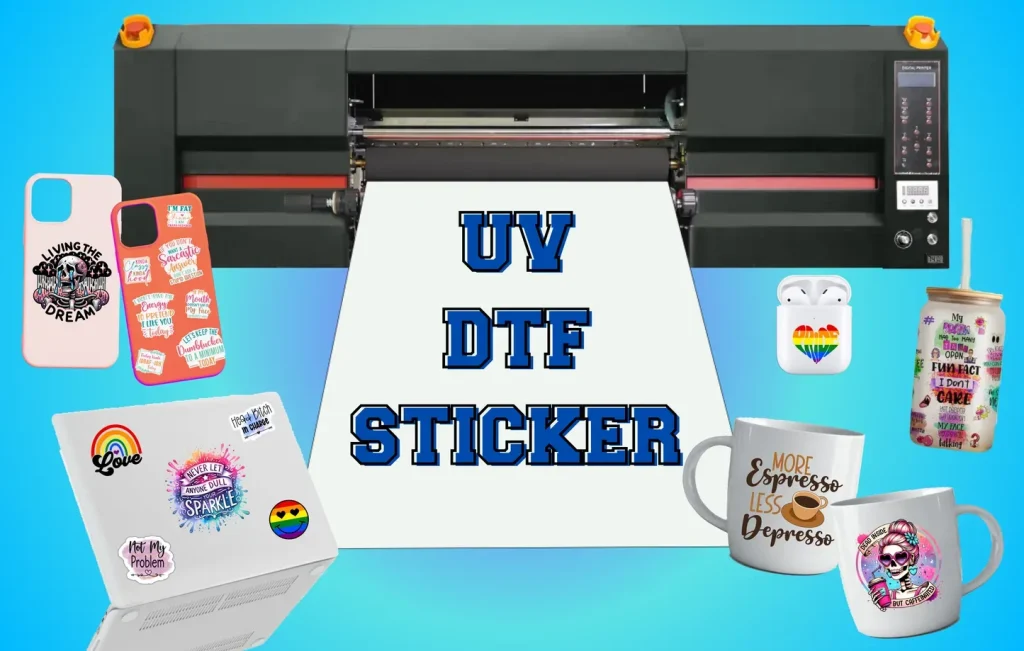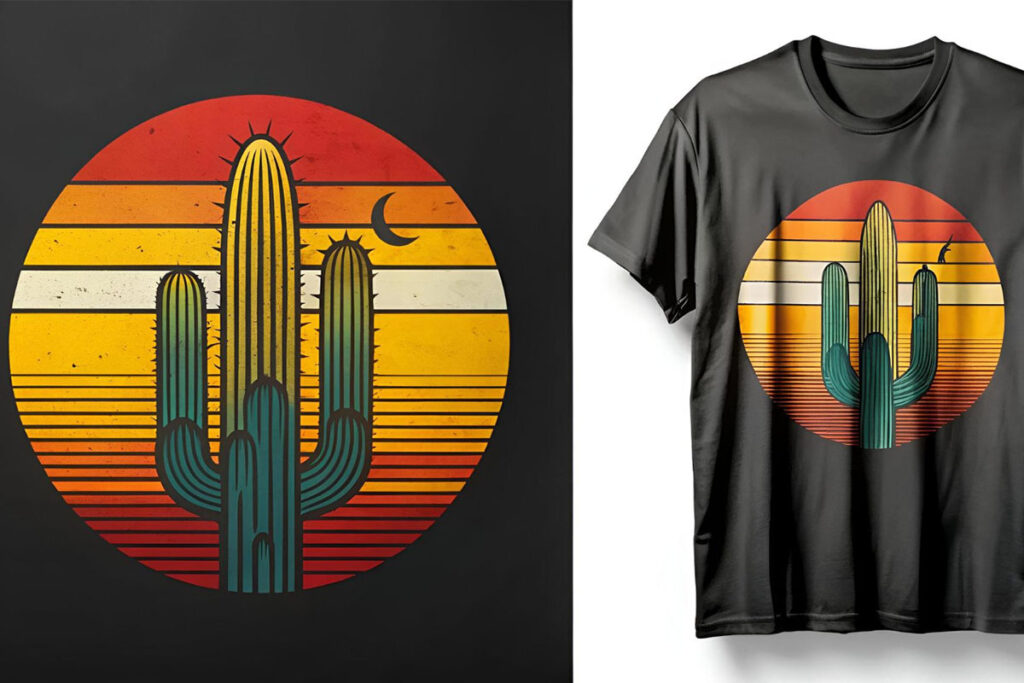UV DTF gangheet technology has revolutionized the printing industry with its direct-to-film capabilities, offering an efficient method for vibrant and durable prints. This cutting-edge process utilizes ultraviolet inks that cure instantly, ensuring high-quality results for a variety of substrates. However, without proper knowledge and care, users can encounter significant UV DTF printing errors that detract from the overall performance. In this guide, we will delve into common mistakes and provide invaluable DTF printing tips to help you harness the full potential of this technology. By avoiding these pitfalls, you can achieve exceptional results and enhance your printing operations.
Exploring the realm of UV Direct to Film printing unveils a plethora of opportunities for creative expression in the industry. Often referred to as UV DTF, this innovative printing technique allows images to be transferred directly onto numerous surfaces, utilizing rapid-curing UV inks for striking visuals. While it provides versatility, a thorough understanding of the process is essential for successful outcomes. Many users mistakenly overlook critical aspects leading to DTF printing problems, which can compromise their projects. This article aims to highlight effective UV printing best practices and the importance of meticulous preparation to ensure remarkable print quality and longevity.
Common Mistakes in UV DTF Printing
When embarking on the journey of UV DTF printing, recognizing common mistakes is essential for delivering outstanding prints. One prevalent error involves improper calibration of the printer. A novice operator might neglect to adjust settings like resolution and color profiles appropriately, leading to unsatisfactory outcomes like mismatched colors or a lack of detail in the final design. To maximize print quality, it is crucial to frequently check and calibrate these printer settings, ensuring they match the specific materials being used.
Another common issue arises from inappropriate material selection. It’s vital to ensure that both the transfer film and the ink are compatible with the UV DTF printing technology. Using a film that cannot withstand UV curing, for example, may cause weak adhesion and fading prints, ultimately compromising the quality of the artwork. Laboratory tests or manufacturer guidelines should always be consulted to ensure material compatibility.
Ensuring Material Compatibility in DTF Printing
Material compatibility plays a fundamental role in the success of UV DTF printing. The choice of transfer film is not just a sidenote but a crucial factor that dictates the adhesion and vibrancy of the print. For instance, UV inks require specific films designed to withstand UV curing processes; using mismatched materials can often lead to frustrating results, like peeling or cracking of prints. To ameliorate these issues, always verify that the transfer materials suit the inks and printer technology employed for your projects.
Moreover, the materials used must cater to the intended substrate, whether fabric, plastic, or metal. The pre-treatment of these materials may also be essential for those that do not naturally promote ink adhesion. Implementing pre-treatment steps guarantees better bonding of the ink to the substrate, ensuring the longevity of the final product. Advancing through material compatibility with awareness fosters the right foundation for achieving high-quality prints.
Optimizing Pre-treatment Steps in UV DTF Printing
Pre-treatment steps are often overlooked yet crucial for successful UV DTF printing. Many substrates, particularly fabrics like cotton and polyester blends, necessitate a pre-treatment phase to improve ink adhesion. Omitting this critical step can yield disappointing results, such as smudging or fading colors as the ink simply does not bond effectively with the material. Implementing an appropriate pre-treatment enhances the quality of the print significantly, making it paramount in achieving durable and vibrant outputs.
Furthermore, experimenting with different pre-treatments can yield various results, depending on the substrate and the type of inks used. For example, applying a specific pre-treatment can vary the final appearance of the print, potentially enhancing its color richness or surface texture. Testing these options before commencing larger production runs is advisable to determine the best treatment for specific materials, ensuring a consistently high-quality finish.
Maintaining Proper Exposure Times in DTF Printing
Exposure times are critical in the DTF printing process, and miscalculating these can lead to significant quality issues. If the exposure time is too long, prints can appear oversaturated, resulting in a muddy look and loss of detail. Conversely, underexposure can lead to prints that lack vibrancy and depth, appearing washed out or patchy. Regular testing and calibration of exposure settings are vital for achieving optimal results; fine-tuning exposure times can drastically influence the print quality, ensuring a balance that retains the artwork’s integrity.
In addition, understanding the specific inks and materials at hand is crucial for managing exposure settings. Different inks may require different curing times, and thus, maintaining a record of previous successful settings greatly aids in streamlining future runs. Consistent monitoring of these parameters ensures that each print batch maintains a high standard, ultimately leading to more professional-quality results in your DTF projects.
Importance of Post-printing Care in DTF Technology
Post-printing care is fundamental in ensuring the durability and appearance of UV DTF prints. Right after the printing process, the prints must undergo sufficient curing—failing to complete this step properly can lead to issues like smudging or peeling. Adequate curing hardens the ink, making the design more resilient to wear and environmental elements, which is essential for producing long-lasting results. Implementing stringent post-printing protocols significantly enhances the overall quality of the print.
Moreover, incorporating protective coatings over the printed visuals can elevate the longevity even further, especially for items subject to heavy use or exposure to the elements. These coatings safeguard against fading and abrasion while maintaining the aesthetic appeal of the print. By prioritizing post-printing procedures, printers can ensure that the final product not only looks professional but also stands the test of time.
Streamlining Workflow for Effective DTF Printing
A streamlined workflow is vital for reducing the likelihood of errors in the DTF printing process. An organized approach can minimize chaos and enhance efficiency, allowing operators to focus on producing high-quality prints consistently. Implementing a structured routine that encompasses pre-printing, printing, and post-printing tasks can alleviate common mistakes that arise from disorganization. By developing a checklist for each stage of the process, operators can ensure nothing is overlooked, thus safeguarding the quality of their outputs.
Incorporating effective communication channels among team members can also enhance workflow management. A collaborative atmosphere fosters teamwork and ensures everyone is aligned with the printing goals. Regular training sessions to familiarize teams with best practices in UV DTF printing technology can also uplift performance standards, keeping errors at bay and encouraging systematic reproducibility in print quality.
Frequently Asked Questions
What are the common mistakes to avoid with UV DTF gangheet printing?
Common mistakes in UV DTF gangheet printing include inadequate printer setup, neglecting material compatibility, skipping pre-treatment steps, and improper exposure times. Ensuring proper calibration, using suitable materials, applying pre-treatments, and balancing exposure can significantly enhance print quality.
How does material compatibility impact UV DTF gangheet results?
Material compatibility is crucial in UV DTF gangheet printing. Using incompatible materials can lead to weak adhesion and fading prints. Always check that the transfer film and inks are suited for UV curing to avoid such issues and ensure the durability of the prints.
What tips can help avoid DTF printing problems?
To avoid DTF printing problems, ensure correct printer setup, use compatible materials, and follow pre-treatment protocols. Regularly calibrate exposure times and monitor post-printing processes, like proper curing, to enhance print longevity and avoid common pitfalls.
What are the best practices for UV printing with DTF technology?
Best practices for UV printing with DTF technology include conducting thorough printer setup, using quality and compatible materials, applying the right pre-treatment, controlling exposure times, and maintaining a systematic workflow for consistent results and print quality.
Why is pre-treatment important in UV DTF gangheet printing?
Pre-treatment is essential in UV DTF gangheet printing because it promotes ink adhesion, especially on challenging fabrics. Skipping this step can lead to poor bonding and compromised durability of the prints, affecting their overall quality.
How can understanding ink properties improve UV DTF printing?
Familiarity with ink properties, such as viscosity and drying times, can immensely improve UV DTF printing outcomes. This knowledge allows operators to adjust their techniques accordingly, ensuring better layering and a more vibrant print result.
| Common Mistakes to Avoid | Description |
|---|---|
| Inadequate Printer Setup | Failing to calibrate printers correctly can lead to color mismatches and lack of detail. |
| Neglecting Material Compatibility | Using incompatible materials can cause weak adhesion and fading prints. |
| Skipping Pre-treatment Steps | Not applying pre-treatment can hinder ink adhesion, affecting print longevity. |
| Over or Under Exposing the Film | Incorrect exposure times can lead to oversaturated or light prints. |
| Ignoring Post-Printing Steps | Failing to cure prints properly can result in smudging or peeling. |
| Poor Workflow Management | Disorganized workflows can increase mistakes and reduce quality. |
| Not Testing New Materials | Skipping tests on new materials can lead to disappointing outcomes. |
| Lack of Knowledge about Ink Properties | Not understanding ink properties can result in subpar prints. |
Summary
UV DTF gangheet technology is a promising method for achieving high-quality prints, yet it is often marred by common mistakes. Understanding these errors—such as inadequate printer setup and neglecting material compatibility—is crucial for anyone looking to harness the full potential of UV DTF printing. By following best practices, including proper pre-treatment and post-printing care alongside a well-structured workflow, printers can significantly enhance their output quality. Adopting these measures ensures durability and vibrant results in your UV DTF projects, making your printing experience both rewarding and efficient.



